In recent discussions surrounding trophy hunting, various myths have been perpetuated, often leading to misconceptions about its impact on wildlife conservation, local communities, and ethics. SUCo-SA (Sustainable Use Coalition Southern Africa) aims to shed light on the realities of trophy hunting by debunking these myths with evidence-based truths:

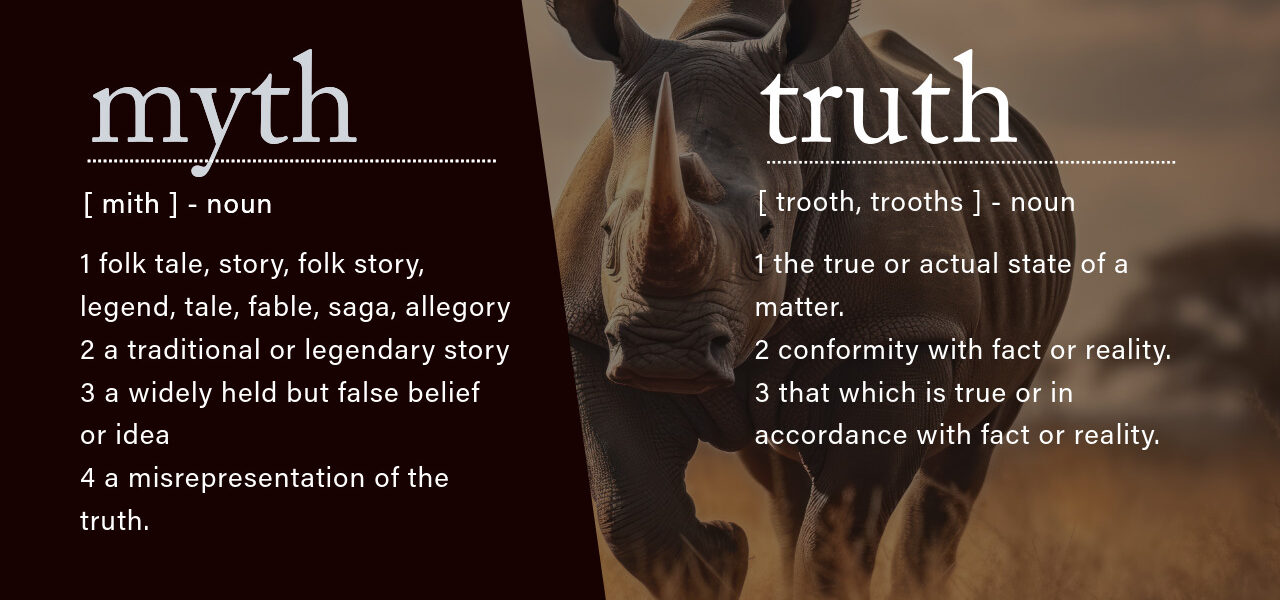
Debunking Myths About Hunting: Separating Fact from Fiction
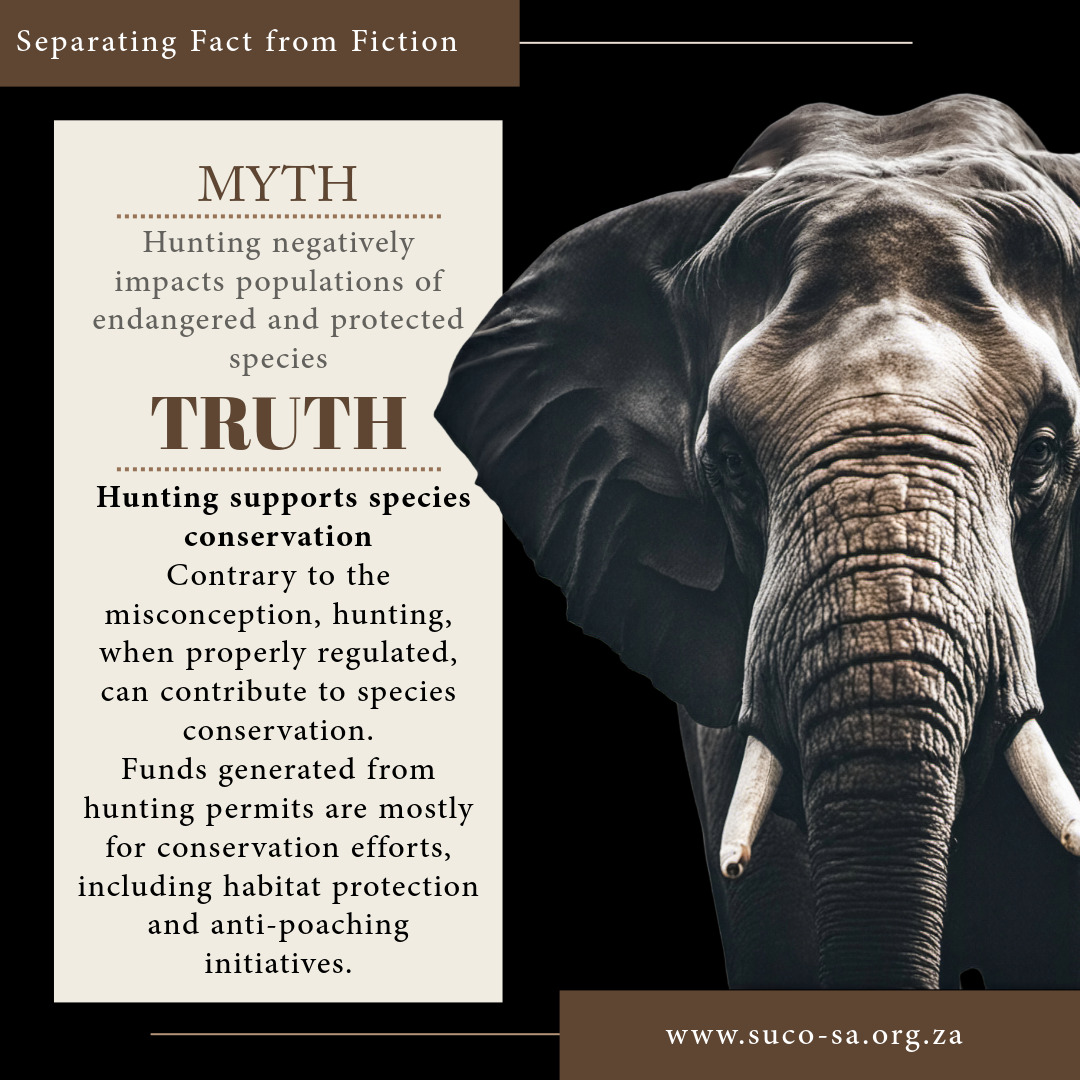
MYTH 1: Hunting negatively impacts populations of endangered and protected species. TRUTH 1: Hunting supports species conservation. Contrary to the misconception, hunting, when properly regulated, can contribute to species conservation. Funds generated from hunting permits are often earmarked for conservation efforts, including habitat protection and anti-poaching initiatives.

MYTH 2: Trophy hunters target animals in their prime that make the best trophies TRUTH 2: Trophy hunting targets surplus or old animals Trophy hunting is often directed at older or surplus animals, ensuring that the overall population remains healthy. This selective approach supports biodiversity and prevents overpopulation, which can lead to habitat degradation and resource scarcity.
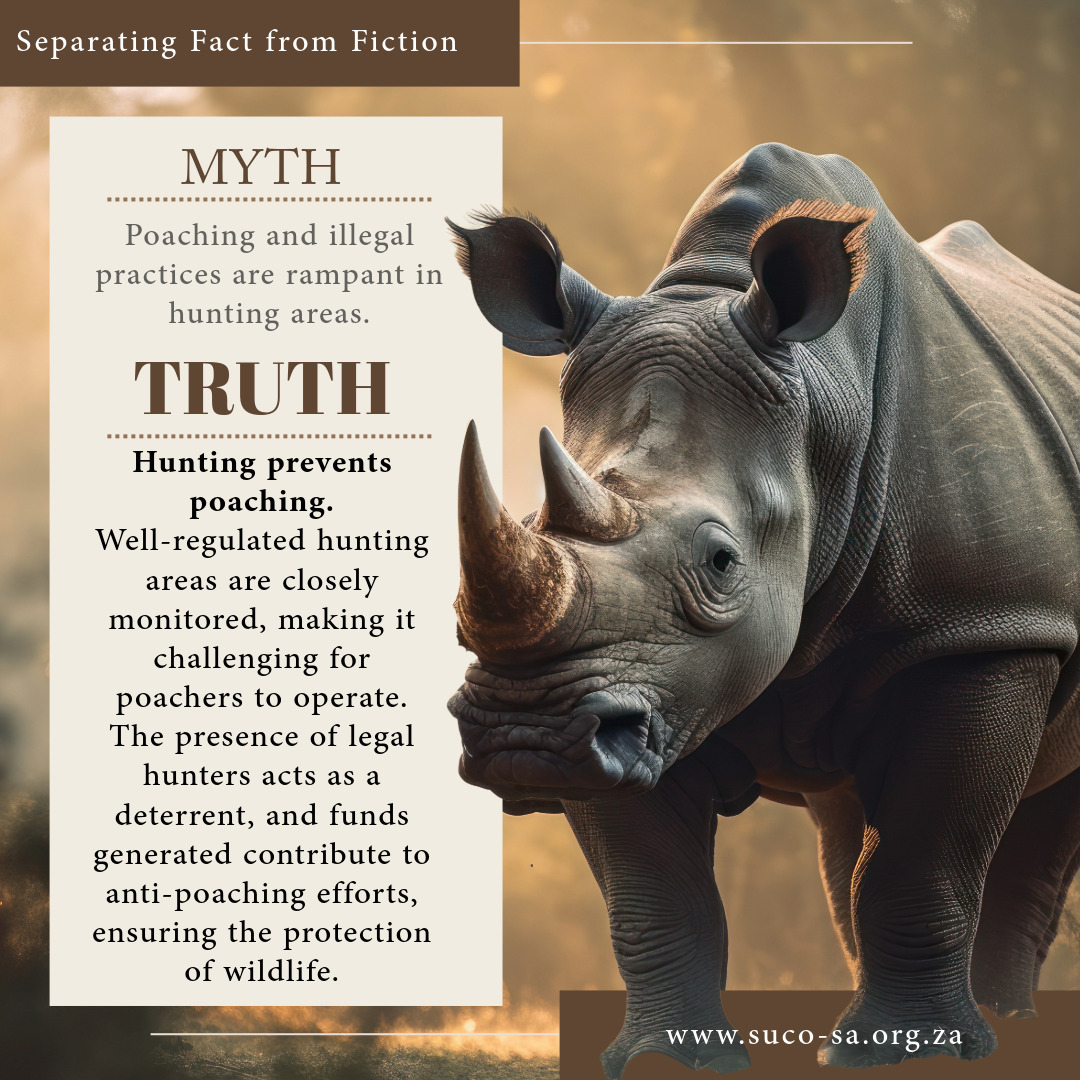
MYTH 3: Poaching and illegal practices are rampant in hunting areas. TRUTH 3: Trophy hunting prevents poaching Well-regulated trophy hunting areas are closely monitored, making it challenging for poachers to operate. The presence of legal hunters acts as a deterrent, and funds generated contribute to anti-poaching efforts, ensuring the protection of wildlife.
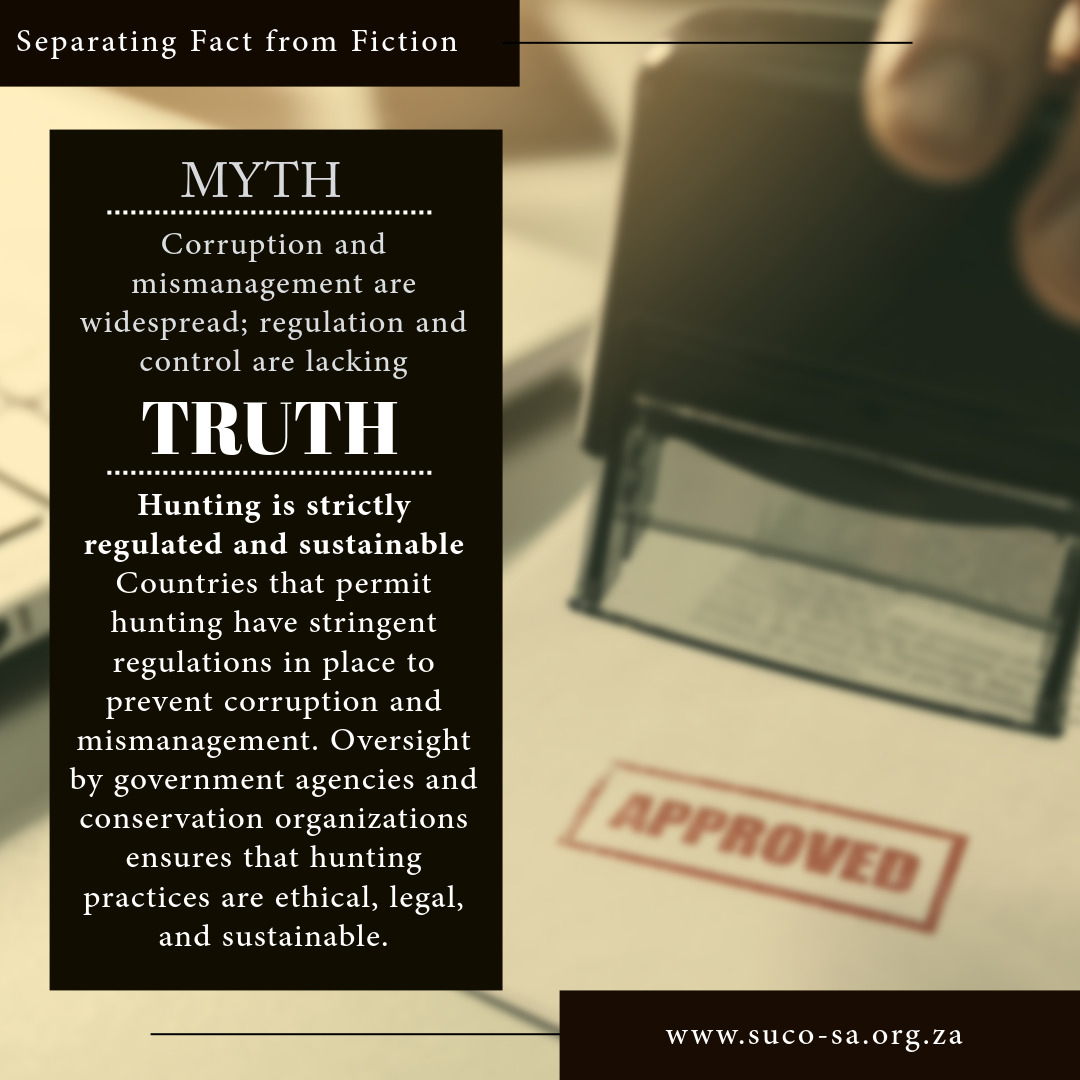
MYTH 4: Corruption and mismanagement are widespread; regulation and control are lacking. TRUTH 4: Trophy hunting is strictly regulated and sustainable Countries that permit trophy hunting have stringent regulations in place to prevent corruption and mismanagement. Oversight by government agencies and conservation organizations ensures that hunting practices are ethical, legal, and sustainable.

When discussing hunting and all the propaganda surrounding it, it’s crucial to consider that…:- “Facts do not cease to exist because they are ignored” Aldous Huxley
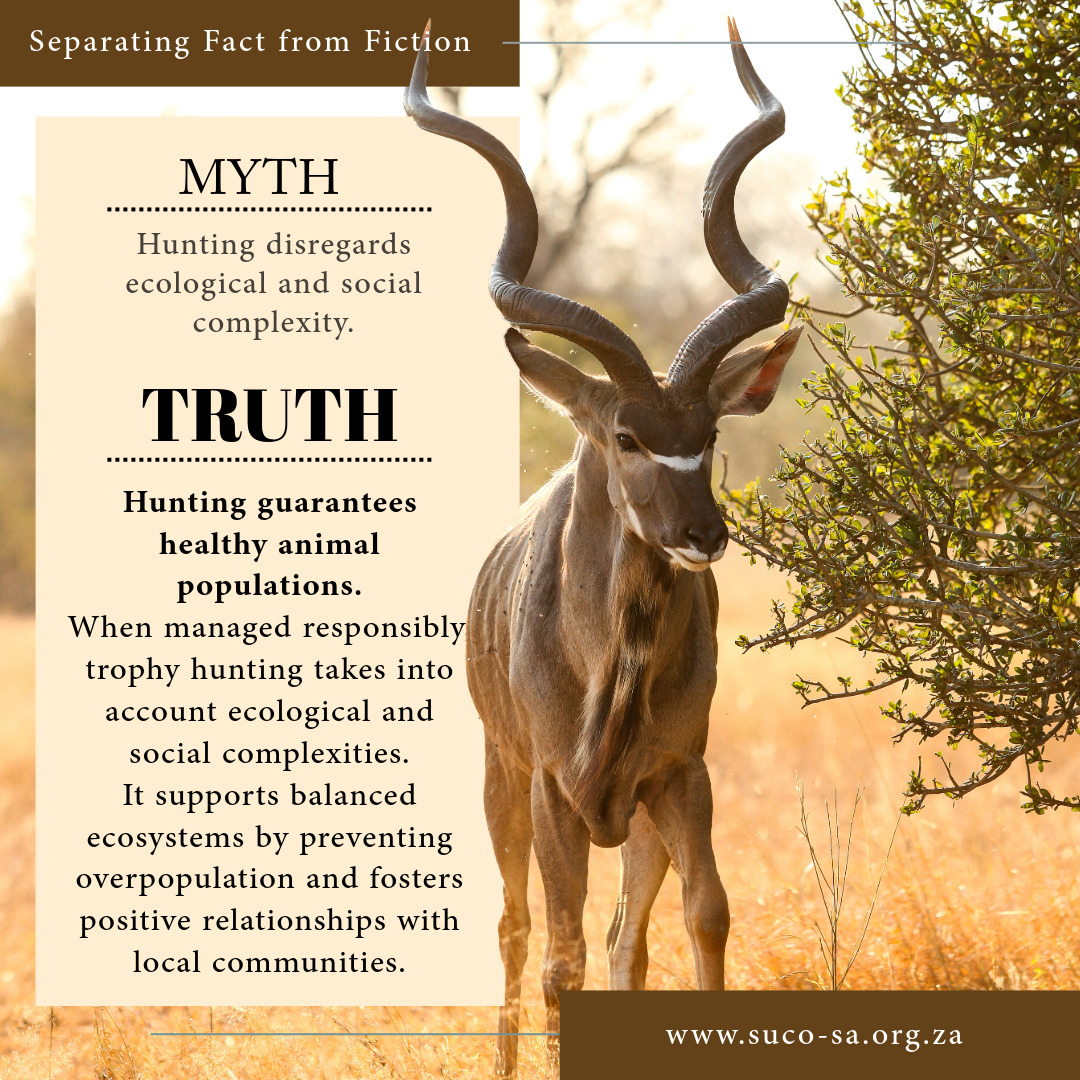
MYTH 5: Hunting disregards ecological and social complexity. TRUTH 5: Trophy hunting guarantees healthy animal populations When managed responsibly, trophy hunting takes into account ecological and social complexities. It supports balanced ecosystems by preventing overpopulation and fosters positive relationships with local communities.
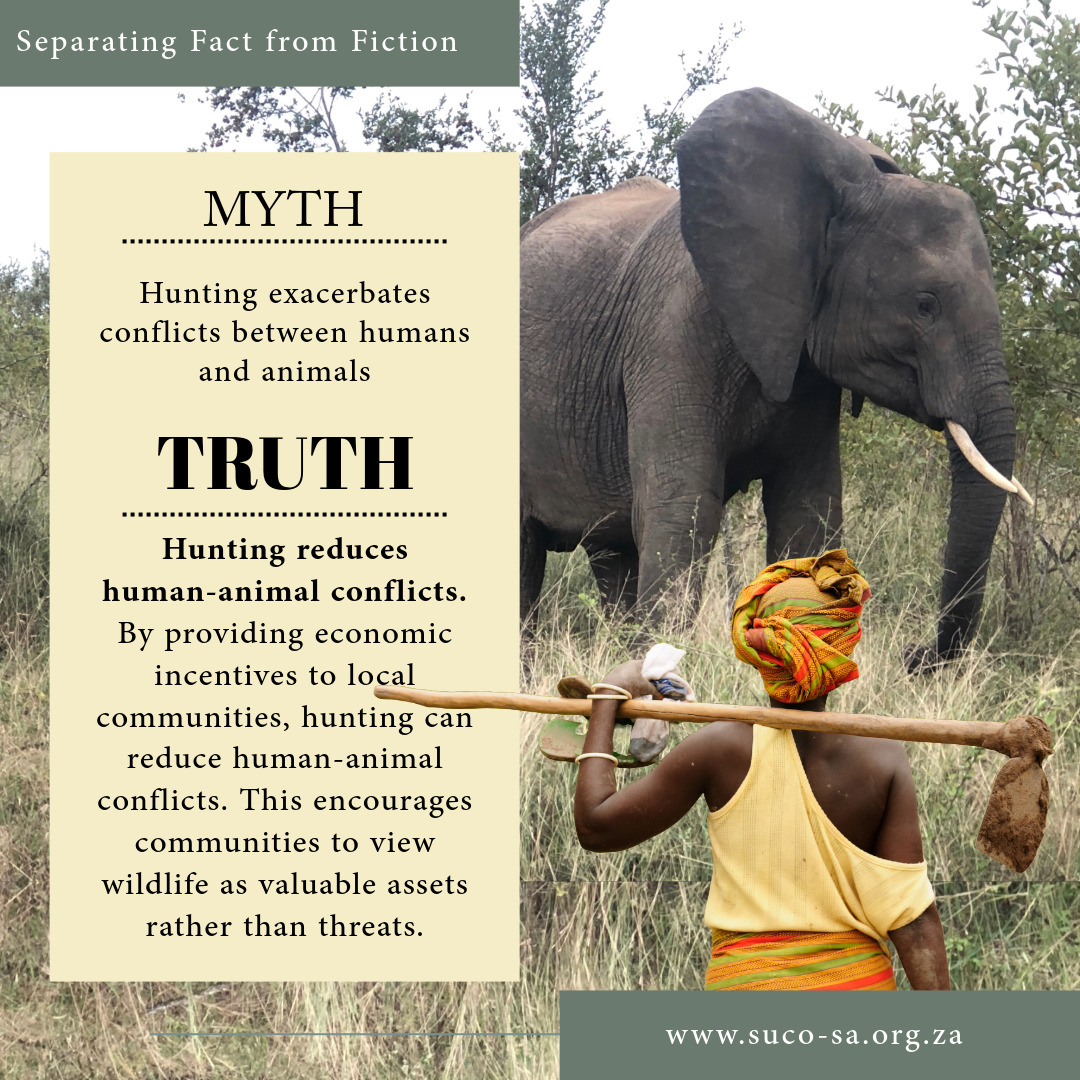
MYTH 6: Hunting exacerbates conflicts between humans and animals. TRUTH 6: Hunting reduces human-animal conflicts. By providing economic incentives to local communities, hunting can reduce human-animal conflicts. This encourages communities to view wildlife as valuable assets rather than threats.

Myth 7: Revenue from hunting does not reach local communities.
Truth 7: Hunting reduces poverty.
Well-structured hunting programs often ensure that a significant portion of the revenue directly benefits local communities, providing employment opportunities and funding community development projects.
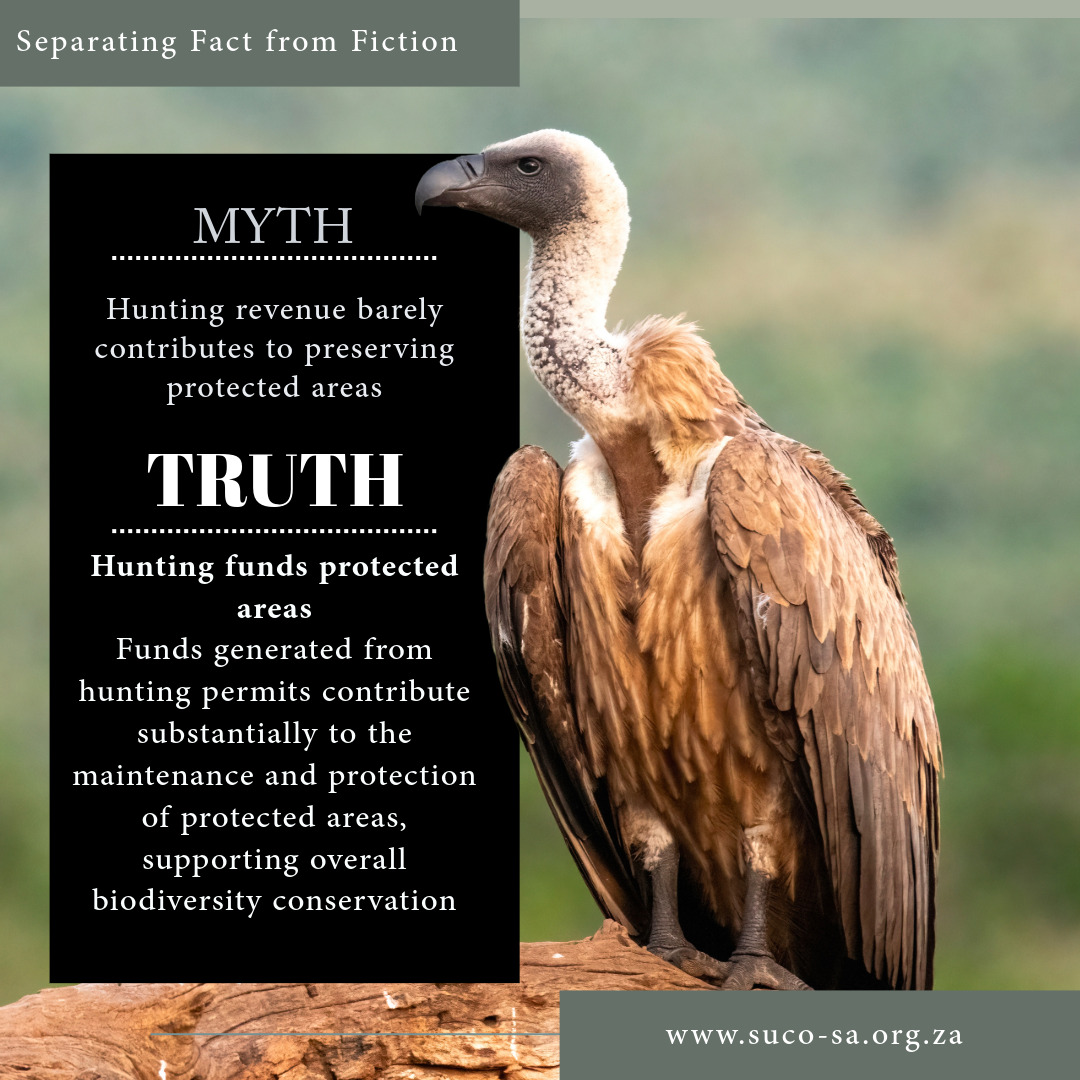
Myth 8: Hunting revenue barely contributes to preserving protected areas
Truth 8: Hunting funds protected areas
Funds generated from trophy hunting permits contribute substantially to the maintenance and protection of protected areas, supporting overall biodiversity conservation.
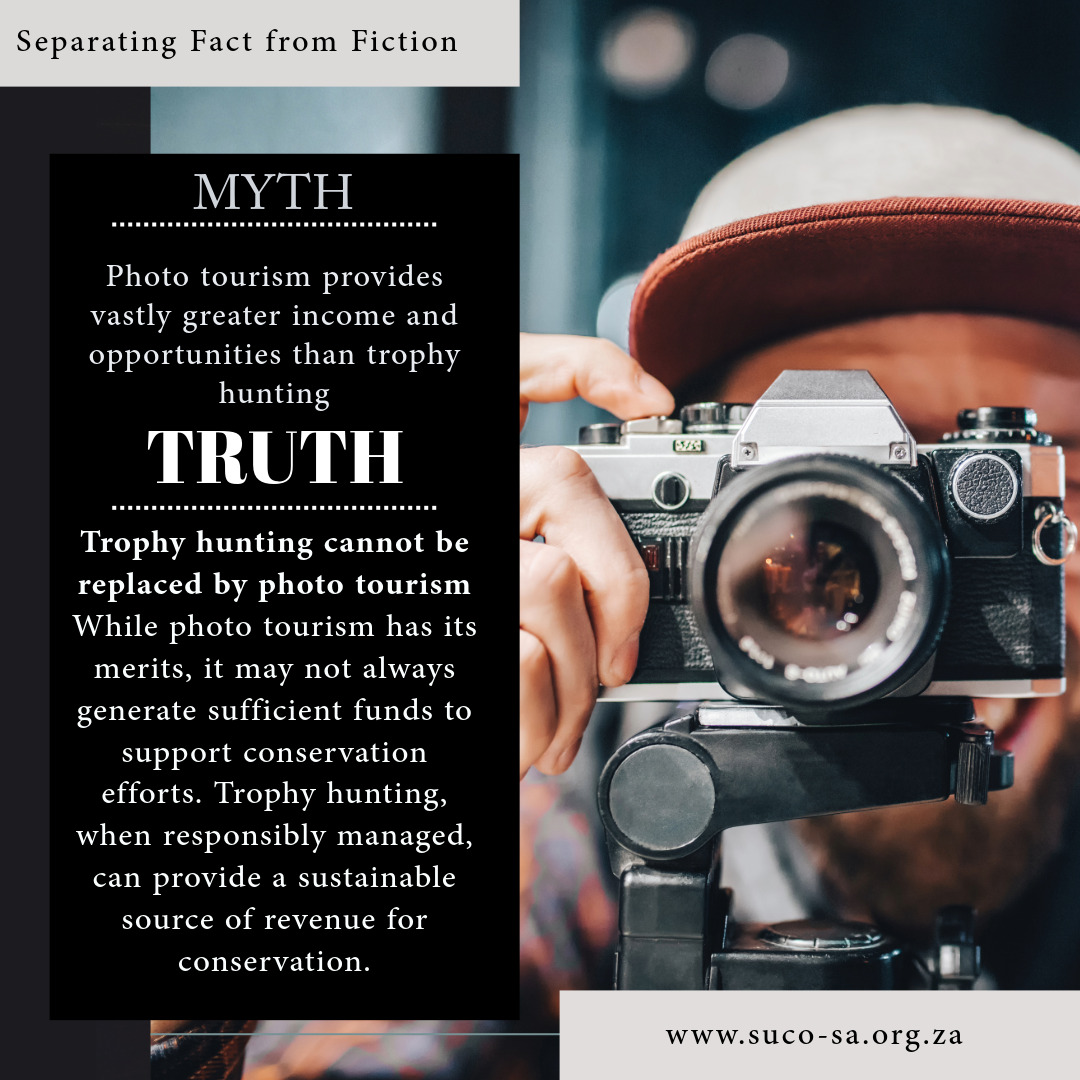
Myth 9: Photo tourism provides vastly greater income and opportunities than trophy hunting.
Truth 9: Trophy hunting cannot be replaced by photo tourism.
While photo tourism has its merits, it may not always generate sufficient funds to support conservation efforts. Trophy hunting, when responsibly managed, can provide a sustainable source of revenue for conservation.
Copyright 2024 | All Rights Reserved | Powered by WILD & JAG / GAME & HUNT


